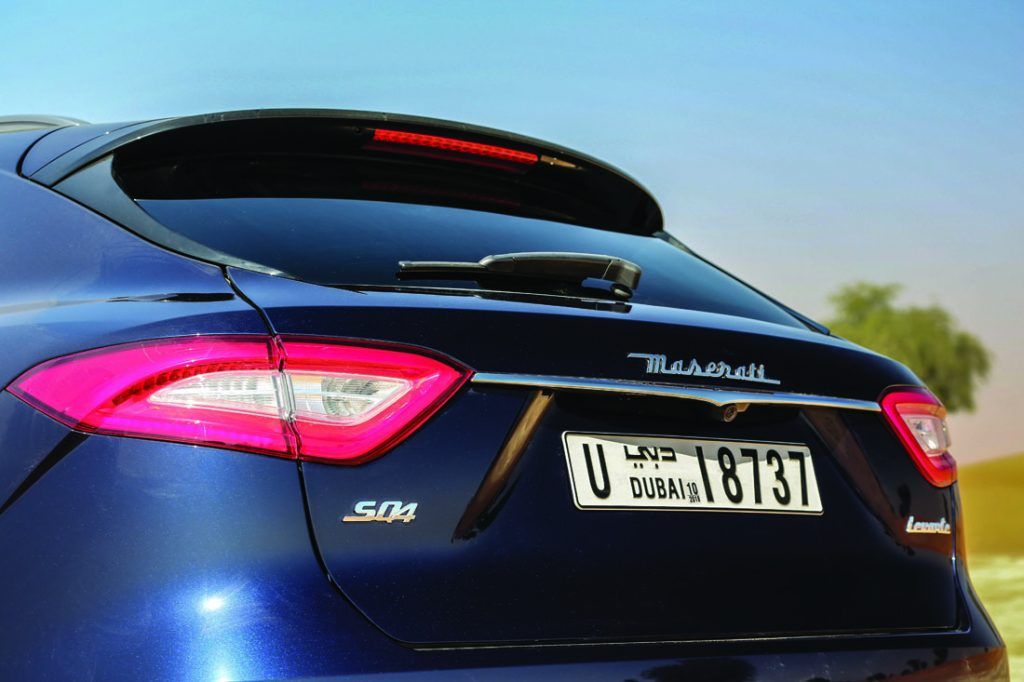Transformer Maserati
It’s been nigh-on one year since the Maserati Levante SUV hit the streets, and what an impact it has had on the brand; it’s been quite the transformation.
A massive 35 percent of Maserati’s new sales last year were Levante, and they predict the figure to be 55 percent this year. What’s more, it’s not just movement inside the Italian carmaker’s brand either; 70 percent of sales are new acquisitions and 90 percent of those are customers’ first-ever Maseratis.
If there had been a glimmer of doubt about the importance of the Levante to Maserati, there is zero now, which is, of course, why they have introduced another five models – well, one new powertrain, plus model options, if you want to be exact. I was invited to Bathurst, NSW, to check out all the new horses.
The Levante launched cleverly (but conservatively) with a popular diesel heart. The strong 3L V6 turbo offered up a more than ample 600Nm of torque with 205kW to play with. But this is Maserati we’re talking about, which means more noise, more power and therefore more octane.
The new Levante S’s 3-litre V6 twin turbo petrol engine comes straight out of Maranello (and is also found in the Quattroporte and Ghibli models). The power is upped to 321kW (that’s a whole heap more horses), torque is 580Nm and (possibly more importantly) it now growls like a Maserati should.
The new S changes aren’t confined to just under the bonnet either, Maserati has embraced its electronics and safety department while taking some of the guesswork out of the trim and styling options.

The basic (as if!) S is the antipasto. It’s the start of Maserati’s delicious three-course Italian meal. The Levante styling remains, as does the fine interior and exterior craftsmanship, and above all else, it’s still an authentically Italian vehicle. But then there’s that additional power 0-100km/h in 5.2 seconds and a top speed of 264km/h, electronic steering (which increases handling positivity and opens up more safety and driving aids) and soft-closing doors!
The GranLusso option has more of a lean toward luxury, with 12-way powered luxury seats, premium leather or Zegna silk upholstery (I’ll tell you more about that in a moment) and Radica open-pore trim. There are more buttons (or dials or voice control) to operate, with more menu options to the 8.4-inch MTC+ unit that takes pride of place at the centre of the Levante dashboard.
With the GranLusso, the styling and trim are more focused on luxury. With the GranSport, it’s more about directly engaging dynamics. Each offers important new advanced driver assistance features, a significant power boost for the Maranello-built V6 petrol engine and an innovative new power steering system.
The GranSport option has more dynamic appeal, with Piano Black or chrome-optioned grille and GranSport nameplate on the front wings. Then there’s the figure (even mine)-hugging seats, to stop you from fidgeting around when taking corners at pace; the bolstered steering wheel, which comes with multi-function controls; the brushed chrome gearbox paddles; and the aluminium foot pedals.
For all of you that may want your Maserati to be uniquely yours, the Levante can be more bespoke; to cater for your every whim, they’ve just made it a little easier. Also, the partnership with Ermenegildo Zegna, one of the world’s leading luxury menswear brand and producer of the finest fabrics, is still firmly in place. The finest leather is combined with Zegna’s mulberry silk inserts on the seats, door panels, roof lining, sunshades and ceiling light fixture. The silk is embellished by a hand-stitched, micro-chevron pattern, while the seating features a central silk insert with a macro-chevron weave. Door panels, roof lining and sun visor are covered with Zegna silk jersey.
Anyway, back to the launch. Thanks to a huge low passing through the territory, our flight from Sydney to Bathurst was delayed a couple of hours, which in turn would have meant less driving time. However, Maserati’s smart-thinking PR people had it covered – the briefing took place over smartphones and Wi-Fi-connected computer displays – all very modern. Fully spec’d up, we would be hitting the ground running (or driving, to be exact).

Following a bumpy arrival at Bathurst and a quick coffee, we headed out to meet the new Levantes. It was a quick introduction; actually, it was more of a Le Mans race to the drivers’ seats – there were roads needing to be explored.
The Levante S has five different driving modes and I’d love to tell you I tested them all out – but I didn’t (although at one point I probably should have added ICE). Normal mode is the all-encompassing mode (default, so to speak). It lets the system think for you, anticipates off-road jaunts and is more than OK for everyday driving. I didn’t use this mode. Off-road allows for more uneven surfaces and adjusts (via air suspension tech) the vehicle height (over 85mm), but given the planned route we were taking (windy tarmac), I didn’t use this mode either. ICE mode is for fuel efficiency and more treacherous weather conditions, like the lightning and hailstorm we encountered later on – this mode was left alone too.
In my mind, Bathurst is a racing town, and despite the Levante S being an SUV, it has a racing car heritage and, on the road, a racing car attitude. So, the one mode (which is, in fact, two) I used for the day was Sport. Sport lets the V6 engine sing through the exhaust, it stiffens up the EPAS (electronic steering) and quickens the gear changing (although, again, I spent a large chunk of the drive in manual, paddling those large paddles). And then, on to Sport II, which firms the suspension to max, frees up the rear end and hunkers down the SUV ready for action.
The drive route took us in a large circle north of the airport with (late) lunch due to be held in Mayfield Gardens. It’s a route I’ve travelled before, and a route that enjoys long uninterrupted straights followed by tight 25km/h corners. It has more than its fair share of hill climbs and, logically, the same amount of steep declines. It’s a route that is fairly taxing for a sports car, so I expected a certain amount of drama driving a medium-to-large SUV (even if it was a Maserati).
Surprisingly, or maybe not, the Levante S held its own well. The V6 had plenty of punch to get up to speed limits quickly and the EPAS/suspension combination made for engaging cornering. The weather added to the fun too, going from bright sun to heavy rain and then hail – it was like being at home in Auckland!
Now, maybe we got a little lost, maybe the hail storm slowed us down a little, or maybe we were simply having too much fun… whatever the reason, we skipped our lunch date and continued to explore the Bathurst tarmac (not the racetrack, unfortunately). The extra time did give me chance to engage some of the driver’s aids. The MSP Maserati stability program, flashed up once or twice as it kept any loss of grip at bay, the HAS (highway assist system) combined cruise control and lane-keep assist (I only tried this out once, but it seemed fine), and Traffic Sign Recognition kept me aware of the speed limits – thankfully, as it was easy to get over-excited listening to the engine pops.
Despite a slow start and the potential for a rain day, we ended up spending a lot of time behind the wheel, swapping up and down (I say ‘down’ tongue in cheek, as it’s hardly a drop at all) the range and getting acquainted with the individual nuances of that range. The Levante may have changed the current consumer base of the brand and transformed appeal, but the S, and its Maranello-built twin-turbo petrol V6 engine, is undisguised Maserati!

